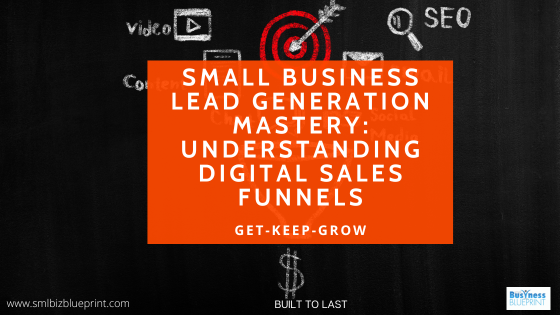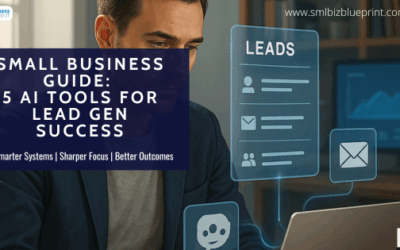As a small or medium-sized enterprise (SME) owner, you know your business’s lifeblood is generating leads.
Leads are potential customers who are interested in your products or services. But how do you efficiently turn these prospects into paying customers?
The answer lies in the strategic use of sales funnels.
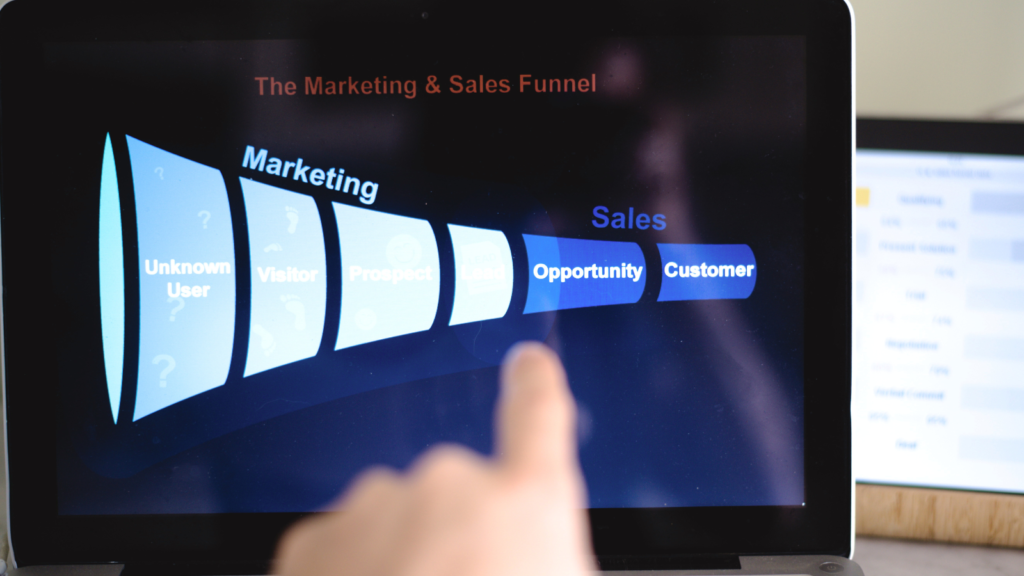
This comprehensive guide will delve into sales funnels and show you how to leverage them for enhanced lead generation.
1 Understanding Sales Funnels
A sales funnel visually represents the buyer’s journey, from initial awareness to final purchase.
It’s a step-by-step process designed to guide potential customers through decision-making.
Picture it as a funnel because, just like one, it starts broad and gradually narrows down to conversions.
2 The Benefits of Sales Funnels for SMEs
Why bother with sales funnels when so many other marketing strategies exist? Well, the benefits are numerous:
Cost-Effectiveness:
Sales funnels can be tailored to fit your budget, making them ideal for SMEs seeking cost-effective marketing solutions.
Scalability:
They can grow with your business, adapting to handle increased leads and conversions as you expand.
Efficiency:
Sales funnels automate the lead nurturing process, saving time and effort.
3 Building Your Sales Funnel
Now that we’ve established the importance of sales funnels let’s build one that suits your Small Business.
Step 1: Define Your Target Audience
Before creating an effective sales funnel, you need to know who you’re targeting.
Define your ideal customer persona, understanding their needs, pain points, and desires.
Step 2: Set Clear Goals
What do you want to achieve with your sales funnel?
Is it to increase website sign-ups, boost product sales, or secure more service inquiries? Clearly defined goals will drive your funnel’s structure.
Top-of-Funnel Strategies
With your target audience and goals in mind, it’s time to attract potential customers at the top of the funnel. Here are some strategies to consider:
Content Marketing: Create informative blog posts, videos, or infographics that resonate with your audience’s interests.
Social Media Engagement: Utilize social platforms to engage with your audience and drive traffic to your website.
SEO Optimization: Ensure your website is optimised for search engines to increase organic traffic.
Middle-of-Funnel Tactics
Once you’ve attracted leads, it’s crucial to nurture them through the middle of the funnel:
Email Marketing: Send personalised and valuable content to leads to engage them.
Webinars and Workshops: Offer educational events to showcase your expertise and build trust.
Personalised Content: Tailor your content to individual lead preferences and behaviours.
Bottom-of-Funnel Conversion Techniques
At the bottom of the funnel, your focus is on converting leads into customers:
Retargeting: Re-engage potential customers who have shown interest but didn’t convert initially.
Discounts and Special Offers: Incentivize conversions with exclusive discounts or time-limited offers.
Compelling CTAs: Create persuasive calls-to-action that guide leads toward making a purchase or inquiry.
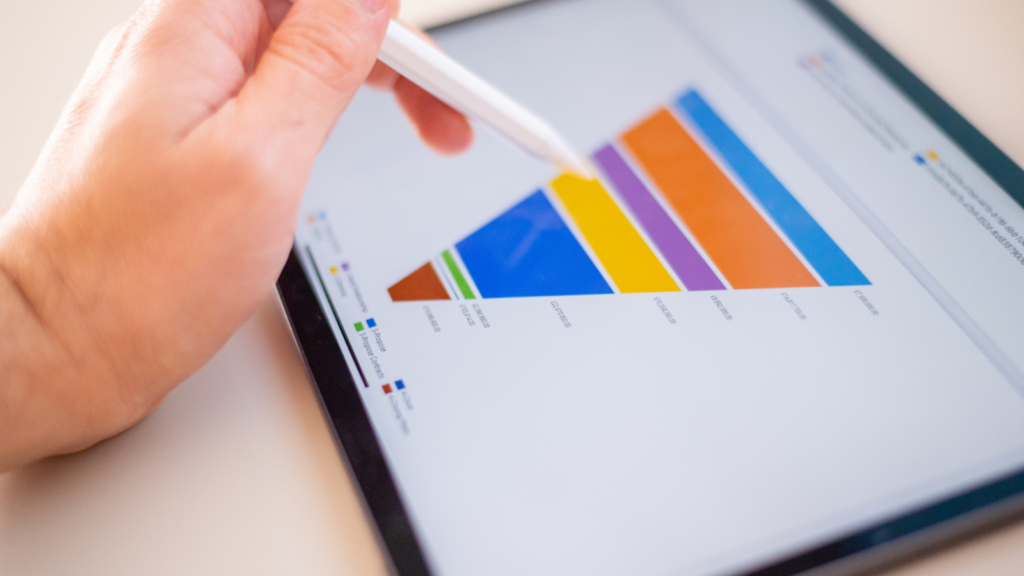
4 Measuring and Analyzing Funnel Performance
To ensure your sales funnel is effective, you must continually measure and analyse its performance.
Track metrics like conversion rates, click-through rates, and customer acquisition costs.
5 Automation and Tools
Consider leveraging automation tools to streamline your sales funnel processes.
Tools like email marketing automation platforms and customer relationship management (CRM) systems can significantly improve efficiency.
6 Common Pitfalls to Avoid
As you embark on your sales funnel journey, be aware of common pitfalls:
Neglecting Lead Nurturing:
Focusing solely on conversion can lead to missed opportunities. Nurture your leads at every stage.
Ignoring Analytics:
Failure to analyse data can result in wasted resources and missed optimisation opportunities.
Overcomplicating the Funnel:
Keep your sales funnel simple and focused to avoid overwhelming your leads.
7 A Typical Digital Sales Funnel
In digital marketing, a well-structured sales funnel can be the key to converting leads into customers efficiently. Let’s break down the key components of a typical digital sales funnel:
Lead Magnet
The lead magnet is at the top of the funnel—valuable content or offer that entices potential customers to engage with your brand. Lead magnets can take various forms, including:
Ebooks: In-depth guides that address your audience’s specific problem or topic of interest.
Checklists: Quick, actionable lists that help your audience achieve a specific goal.
Webinars: Live or pre-recorded online events that provide educational value.
Templates: Ready-made resources that simplify a task for your audience.
Free Trials: Offering a limited-time trial of your product or service.
The key is to provide something of genuine value to your audience in exchange for their contact information.
Landing Page
Once your lead magnet has piqued their interest, the next step is to guide potential customers to a dedicated landing page. Here’s what an effective landing page should include:
Compelling Headline: Clearly state what your offer is and its benefit.
Engaging Content: Provide details about the lead magnet’s value and how it addresses a specific problem.
Eye-Catching Visuals: Use images, videos, or graphics to enhance the page’s appeal.
Lead Capture Form: Request essential contact information (e.g., name and email) to deliver the lead magnet.
Call to Action (CTA): Encourage visitors to take action, such as “Download Now” or “Get Your Free Trial.”
Thank You Page
After visitors submit their information on the landing page, they’re redirected to a thank you page. This page serves several purposes:
Confirmation: Acknowledge that their request was successful and express gratitude.
Next Steps: Provide instructions on accessing the lead magnet or what to expect next.
Additional Offers: Consider presenting related offers or content to keep them engaged.
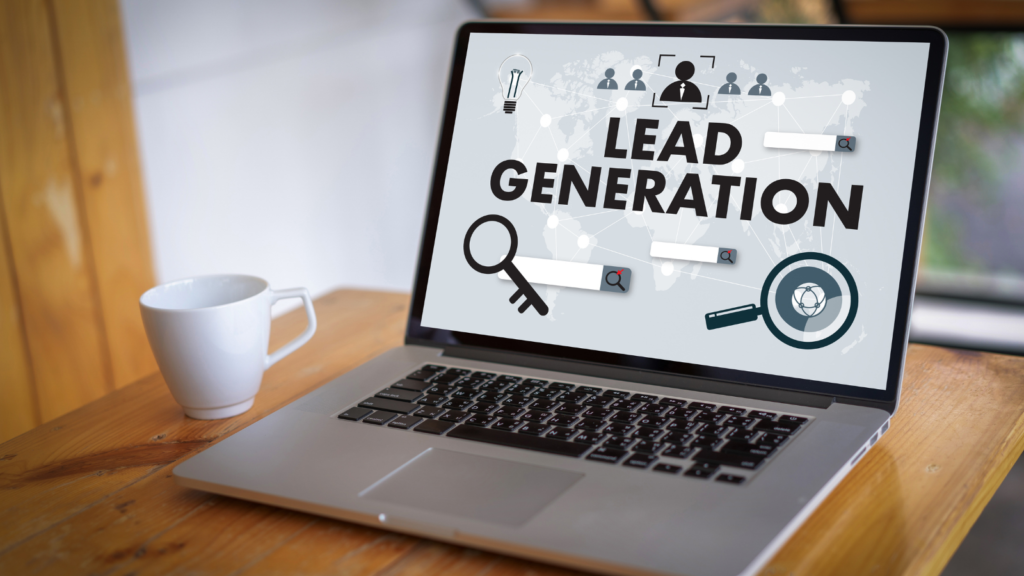
Sales Page
As you move further down the funnel, it’s time to introduce your product or service. A well-crafted sales page should:
Highlight Benefits: Clearly communicate how your offering solves the audience’s problems or fulfils their needs.
Use Persuasive Copy: Craft compelling, persuasive copy that addresses objections and encourages action.
Incorporate Visuals: Include images, videos, or infographics to enhance understanding.
Feature Testimonials: Showcase reviews and testimonials from satisfied customers.
Include a Strong CTA: Encourage visitors to take action, such as “Buy Now” or “Request a Demo.”
Follow-Up Email Series
Not every lead will convert on the first visit to your sales page. That’s where a follow-up email series comes in. This series allows you to nurture leads who didn’t initially make a purchase.
Key elements of an effective email series include:
Segmentation: Send targeted emails based on the lead’s actions and interests.
Value-Driven Content: Provide additional value through educational content, case studies, or tips.
Personalisation: Address recipients by their names and tailor content to their preferences.
CTAs: Encourage recipients to take specific actions, such as revisiting the sales page or contacting your team.
By understanding and implementing the components of a typical digital sales funnel—lead magnet, landing page, thank you page, sales page, and follow-up email series—you can create a structured and effective process for converting leads into loyal customers.
Providing consistent value and personalised experiences at each funnel stage is key to success.
Conclusion
In conclusion, implementing an effective sales funnel can revolutionise lead generation for your Small Business.
With the right strategies, tools, and a keen understanding of your target audience, you can create a streamlined process that converts leads into loyal customers.

5 Things to Action
Define Your Ideal Customer Persona:
Take the time to understand your target audience thoroughly. What are their needs, pain points, and preferences? Creating detailed buyer personas will guide your entire sales funnel strategy.
Set Clear and Achievable Goals:
Establish specific, measurable, and time-bound goals for your sales funnel. Whether it’s increasing website sign-ups, boosting product sales, or securing more service inquiries, clear objectives will keep your efforts on track.
Implement Automation Tools:
Invest in automation tools like email marketing platforms and CRM systems to streamline your sales funnel processes. Automation can save you time and ensure you consistently nurture leads.
Regularly Analyze and Optimize:
Make data-driven decisions by continually measuring and analysing key metrics in your sales funnel. Identify areas that need improvement and optimise your strategies accordingly.
Stay Committed and Patient:
Building an effective sales funnel takes time and effort. Stay committed to the process, consistently providing value to your leads, and be patient as your efforts pay off in the form of increased conversions.
By taking these five actionable steps, you’ll be well on your way to harnessing the power of sales funnels for enhanced lead generation in your Small Business.
Remember that success comes with persistence and continuous improvement. Best of luck in your journey to growing your business through strategic lead generation!
FAQs
Q1: What is a sales funnel?
A sales funnel visually represents the buyer’s journey, guiding potential customers from initial awareness to final purchase.
Q2: Why are sales funnels important for SMEs?
Sales funnels are cost-effective, scalable, and efficient, making them ideal for SMEs looking to boost lead generation.
Q3: How do I measure sales funnel performance?
Track metrics like conversion rates, click-through rates, and customer acquisition costs to evaluate your sales funnel’s effectiveness.
Q4: Can automation tools help with sales funnels?
Yes, automation tools like email marketing platforms and CRM systems can streamline sales funnel processes and improve efficiency.
Q5: What are common pitfalls to avoid when using sales funnels?
Common pitfalls include neglecting lead nurturing, ignoring analytics, and overcomplicating the funnel.
Q6: How can I start creating a sales funnel for my Small Business?
Start by defining your target audience, setting clear goals, and implementing top-of-funnel strategies to attract leads.
Now that you have the knowledge and tools, it’s time to implement your newfound expertise.
Build your sales funnel, measure your results, and watch your SME thrive in the world of lead generation.
If you have any questions or need further assistance, please leave a comment below. We’re here to help you succeed.

